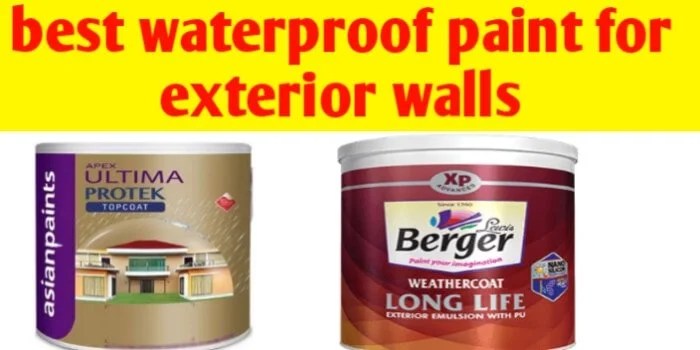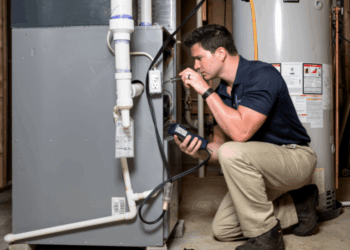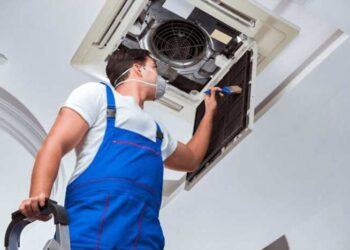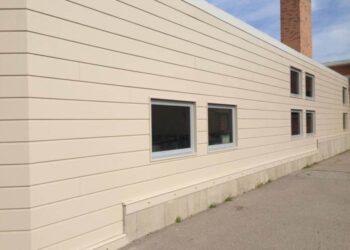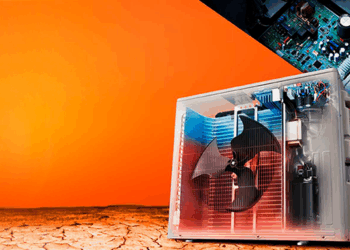As we dive into the world of waterproof exterior paint solutions, we uncover a realm filled with innovation and practicality. From protecting your home against the elements to enhancing its aesthetic appeal, these solutions offer a range of benefits that can transform any exterior surface.
Let's explore the types, application methods, factors to consider, and maintenance tips for waterproof exterior paint solutions.
Types of Waterproof Exterior Paint Solutions
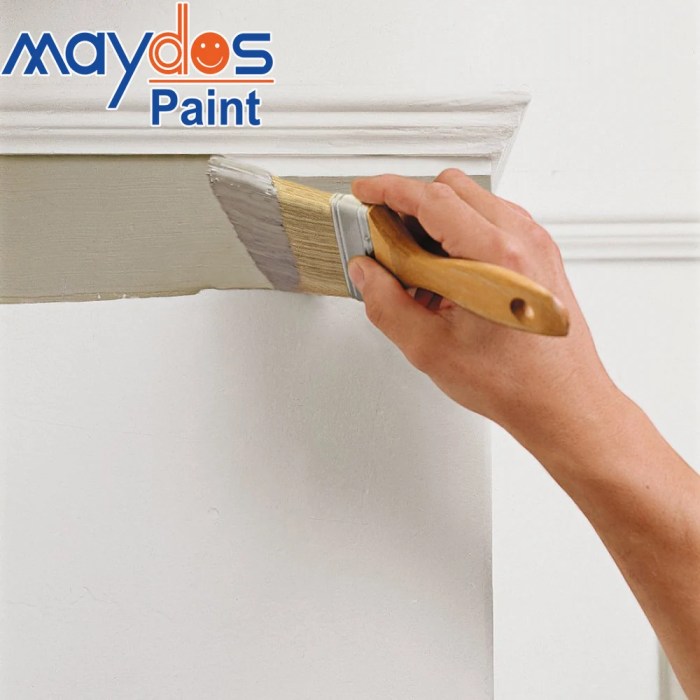
When it comes to protecting the exterior of your property from the elements, choosing the right waterproof exterior paint solution is crucial. Here are some of the most common types available in the market:
Elastomeric Paint
Elastomeric paint is a flexible coating that expands and contracts with the surface to prevent cracking. It is highly durable and provides excellent waterproofing properties, making it ideal for areas prone to extreme weather conditions.
Acrylic Paint
Acrylic paint is known for its fast drying time and versatility. While it may not be as flexible as elastomeric paint, it still offers good waterproofing capabilities and comes in a wide range of colors.
Oil-Based Paint
Oil-based paint is extremely durable and provides a protective barrier against moisture. However, it tends to take longer to dry and may emit strong odors during application. It is best suited for areas that require a high level of waterproofing.
Liquid Rubber Paint
Liquid rubber paint creates a seamless, waterproof membrane when applied to surfaces. It is highly effective in preventing water infiltration and can be used on various materials, including metal, concrete, and wood.
Waterproofing Sealants
Waterproofing sealants are not technically paints, but they are essential for protecting exterior surfaces from water damage. These sealants can be applied before painting to enhance waterproofing capabilities and improve the longevity of the paint job.Each type of waterproof exterior paint solution has its own set of characteristics and benefits, so it's important to consider your specific needs and the conditions of your property before making a decision.
Remember to factor in durability and effectiveness when comparing different options.
Application Methods for Waterproof Exterior Paint
When it comes to applying waterproof exterior paint, it is essential to follow the correct steps to ensure a long-lasting and effective finish. Here is a step-by-step guide on how to apply waterproof exterior paint, along with tips for surface preparation and common mistakes to avoid.
Surface Preparation:
Before applying waterproof exterior paint, it is crucial to prepare the surface properly to ensure adhesion and durability. Here are some tips for preparing the surface:
- Clean the surface thoroughly to remove any dirt, grime, or mildew using a pressure washer or scrub brush with a cleaning solution.
- Repair any cracks, holes, or damage to the surface with an appropriate filler or sealant.
- Sand the surface to create a smooth and even texture for better paint adhesion.
- Prime the surface with a suitable primer to improve adhesion and enhance the durability of the waterproof paint.
Application Process:
- Start by stirring the waterproof exterior paint thoroughly to ensure an even consistency.
- Use a brush, roller, or sprayer to apply the paint evenly on the surface, following the manufacturer's instructions for the recommended application method.
- Apply multiple thin coats of paint rather than a single thick coat to achieve better coverage and durability.
- Allow each coat to dry completely before applying the next coat to prevent peeling or bubbling.
- Ensure proper ventilation during the painting process to allow the paint to dry effectively.
Common Mistakes to Avoid:
- Avoid painting over a damp or wet surface, as this can lead to poor adhesion and premature peeling of the paint.
- Avoid applying paint in extreme temperatures, as it can affect the drying process and the overall finish of the paint.
- Do not skip the surface preparation steps, as proper preparation is crucial for the paint to adhere correctly and provide long-lasting protection.
- Avoid over-thinning the paint, as it can affect the coverage and durability of the waterproof exterior paint.
Factors to Consider When Choosing Waterproof Exterior Paint
When selecting waterproof exterior paint for your project, there are several key factors to consider to ensure the best results. Factors such as climate, surface material, and desired finish play a crucial role in determining the right type of paint for the job.
Climate
The climate of the area where the paint will be applied is an important consideration. For example, if you live in an area with high humidity or frequent rain, you will need a paint that can withstand moisture and prevent mold or mildew growth.
Surface Material
The surface material of the area to be painted also influences the choice of waterproof paint. Different materials such as wood, stucco, or concrete may require specific types of paint to adhere properly and provide long-lasting protection.
Desired Finish
Consider the desired finish of the project when choosing waterproof exterior paint. Whether you prefer a matte, satin, or glossy finish will impact the type of paint you select. Some finishes may offer more durability or UV protection than others.
Choosing High-Quality Paint
It is crucial to choose high-quality waterproof exterior paint for long-lasting results. Investing in a reputable brand and quality paint will ensure better adhesion, color retention, and protection against the elements. Cheaper paints may require more frequent recoating and may not provide the same level of waterproofing.
Maintenance and Care of Waterproof Exterior Paint
Proper maintenance and care are crucial to ensuring the longevity and effectiveness of waterproof exterior paint. By following recommended practices, you can protect your investment and keep your property looking great for years to come.
Recommended Maintenance Practices
- Regularly inspect the painted surfaces for any signs of wear, peeling, or damage.
- Address any issues promptly by cleaning the area and applying touch-up paint as needed.
- Keep the exterior surfaces clean by washing them with a mild detergent and water at least once a year.
- Trim back vegetation that may be touching or rubbing against the painted surfaces to prevent damage.
- Monitor the condition of the paint during extreme weather conditions and consider additional protective measures if necessary.
Cleaning and Protection
- Use a soft brush or cloth to gently clean the painted surfaces, avoiding harsh chemicals that may damage the paint.
- Remove any mold or mildew promptly using a mixture of water and bleach, following safety guidelines.
- Apply a clear sealant or protective coating over the waterproof paint to enhance its durability and resistance to the elements.
- Avoid using abrasive tools or harsh cleaning methods that could scratch or chip the paint.
Reapplication of Waterproof Exterior Paint
- Consider reapplying waterproof exterior paint every 5-7 years, or as recommended by the manufacturer, to maintain optimal protection.
- Prepare the surface by cleaning and priming before applying a fresh coat of paint to ensure adhesion and longevity.
- Monitor the condition of the paint regularly and schedule a repaint if you notice significant wear or damage.
Summary
In conclusion, waterproof exterior paint solutions play a crucial role in safeguarding your property while adding a touch of style. By understanding the various types available, application techniques, key considerations, and maintenance practices, you can ensure long-lasting protection and beauty for your exterior surfaces.
Embrace the power of waterproof paint and elevate the look and durability of your home today.
FAQ Overview
What are the key factors to consider when choosing waterproof exterior paint?
Consider factors such as climate, surface material, and desired finish to select the right type of waterproof paint for optimal results.
How often should waterproof exterior paint be reapplied?
It is recommended to reapply waterproof paint when signs of wear and tear or reduced effectiveness become noticeable, typically every few years.
Can waterproof exterior paint be used on all surface materials?
While waterproof paint is versatile, it's essential to check compatibility with specific surface materials to ensure proper adhesion and longevity.
As we dive into the world of waterproof exterior paint solutions, we uncover a realm filled with innovation and practicality. From protecting your home against the elements to enhancing its aesthetic appeal, these solutions offer a range of benefits that can transform any exterior surface.
Let's explore the types, application methods, factors to consider, and maintenance tips for waterproof exterior paint solutions.
Types of Waterproof Exterior Paint Solutions

When it comes to protecting the exterior of your property from the elements, choosing the right waterproof exterior paint solution is crucial. Here are some of the most common types available in the market:
Elastomeric Paint
Elastomeric paint is a flexible coating that expands and contracts with the surface to prevent cracking. It is highly durable and provides excellent waterproofing properties, making it ideal for areas prone to extreme weather conditions.
Acrylic Paint
Acrylic paint is known for its fast drying time and versatility. While it may not be as flexible as elastomeric paint, it still offers good waterproofing capabilities and comes in a wide range of colors.
Oil-Based Paint
Oil-based paint is extremely durable and provides a protective barrier against moisture. However, it tends to take longer to dry and may emit strong odors during application. It is best suited for areas that require a high level of waterproofing.
Liquid Rubber Paint
Liquid rubber paint creates a seamless, waterproof membrane when applied to surfaces. It is highly effective in preventing water infiltration and can be used on various materials, including metal, concrete, and wood.
Waterproofing Sealants
Waterproofing sealants are not technically paints, but they are essential for protecting exterior surfaces from water damage. These sealants can be applied before painting to enhance waterproofing capabilities and improve the longevity of the paint job.Each type of waterproof exterior paint solution has its own set of characteristics and benefits, so it's important to consider your specific needs and the conditions of your property before making a decision.
Remember to factor in durability and effectiveness when comparing different options.
Application Methods for Waterproof Exterior Paint
When it comes to applying waterproof exterior paint, it is essential to follow the correct steps to ensure a long-lasting and effective finish. Here is a step-by-step guide on how to apply waterproof exterior paint, along with tips for surface preparation and common mistakes to avoid.
Surface Preparation:
Before applying waterproof exterior paint, it is crucial to prepare the surface properly to ensure adhesion and durability. Here are some tips for preparing the surface:
- Clean the surface thoroughly to remove any dirt, grime, or mildew using a pressure washer or scrub brush with a cleaning solution.
- Repair any cracks, holes, or damage to the surface with an appropriate filler or sealant.
- Sand the surface to create a smooth and even texture for better paint adhesion.
- Prime the surface with a suitable primer to improve adhesion and enhance the durability of the waterproof paint.
Application Process:
- Start by stirring the waterproof exterior paint thoroughly to ensure an even consistency.
- Use a brush, roller, or sprayer to apply the paint evenly on the surface, following the manufacturer's instructions for the recommended application method.
- Apply multiple thin coats of paint rather than a single thick coat to achieve better coverage and durability.
- Allow each coat to dry completely before applying the next coat to prevent peeling or bubbling.
- Ensure proper ventilation during the painting process to allow the paint to dry effectively.
Common Mistakes to Avoid:
- Avoid painting over a damp or wet surface, as this can lead to poor adhesion and premature peeling of the paint.
- Avoid applying paint in extreme temperatures, as it can affect the drying process and the overall finish of the paint.
- Do not skip the surface preparation steps, as proper preparation is crucial for the paint to adhere correctly and provide long-lasting protection.
- Avoid over-thinning the paint, as it can affect the coverage and durability of the waterproof exterior paint.
Factors to Consider When Choosing Waterproof Exterior Paint
When selecting waterproof exterior paint for your project, there are several key factors to consider to ensure the best results. Factors such as climate, surface material, and desired finish play a crucial role in determining the right type of paint for the job.
Climate
The climate of the area where the paint will be applied is an important consideration. For example, if you live in an area with high humidity or frequent rain, you will need a paint that can withstand moisture and prevent mold or mildew growth.
Surface Material
The surface material of the area to be painted also influences the choice of waterproof paint. Different materials such as wood, stucco, or concrete may require specific types of paint to adhere properly and provide long-lasting protection.
Desired Finish
Consider the desired finish of the project when choosing waterproof exterior paint. Whether you prefer a matte, satin, or glossy finish will impact the type of paint you select. Some finishes may offer more durability or UV protection than others.
Choosing High-Quality Paint
It is crucial to choose high-quality waterproof exterior paint for long-lasting results. Investing in a reputable brand and quality paint will ensure better adhesion, color retention, and protection against the elements. Cheaper paints may require more frequent recoating and may not provide the same level of waterproofing.
Maintenance and Care of Waterproof Exterior Paint
Proper maintenance and care are crucial to ensuring the longevity and effectiveness of waterproof exterior paint. By following recommended practices, you can protect your investment and keep your property looking great for years to come.
Recommended Maintenance Practices
- Regularly inspect the painted surfaces for any signs of wear, peeling, or damage.
- Address any issues promptly by cleaning the area and applying touch-up paint as needed.
- Keep the exterior surfaces clean by washing them with a mild detergent and water at least once a year.
- Trim back vegetation that may be touching or rubbing against the painted surfaces to prevent damage.
- Monitor the condition of the paint during extreme weather conditions and consider additional protective measures if necessary.
Cleaning and Protection
- Use a soft brush or cloth to gently clean the painted surfaces, avoiding harsh chemicals that may damage the paint.
- Remove any mold or mildew promptly using a mixture of water and bleach, following safety guidelines.
- Apply a clear sealant or protective coating over the waterproof paint to enhance its durability and resistance to the elements.
- Avoid using abrasive tools or harsh cleaning methods that could scratch or chip the paint.
Reapplication of Waterproof Exterior Paint
- Consider reapplying waterproof exterior paint every 5-7 years, or as recommended by the manufacturer, to maintain optimal protection.
- Prepare the surface by cleaning and priming before applying a fresh coat of paint to ensure adhesion and longevity.
- Monitor the condition of the paint regularly and schedule a repaint if you notice significant wear or damage.
Summary
In conclusion, waterproof exterior paint solutions play a crucial role in safeguarding your property while adding a touch of style. By understanding the various types available, application techniques, key considerations, and maintenance practices, you can ensure long-lasting protection and beauty for your exterior surfaces.
Embrace the power of waterproof paint and elevate the look and durability of your home today.
FAQ Overview
What are the key factors to consider when choosing waterproof exterior paint?
Consider factors such as climate, surface material, and desired finish to select the right type of waterproof paint for optimal results.
How often should waterproof exterior paint be reapplied?
It is recommended to reapply waterproof paint when signs of wear and tear or reduced effectiveness become noticeable, typically every few years.
Can waterproof exterior paint be used on all surface materials?
While waterproof paint is versatile, it's essential to check compatibility with specific surface materials to ensure proper adhesion and longevity.

